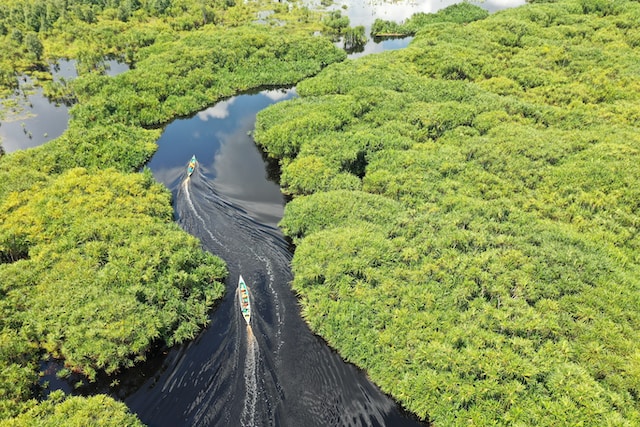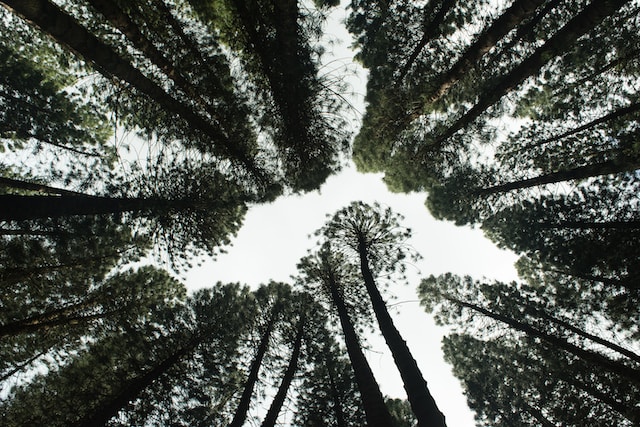When you step out into nature, you’re entering a realm of intricate interactions, where living organisms and their environments coexist in a delicate balance.
This captivating web of life is known as an ecosystem.
In this article, we’ll dive deep into the fascinating world of ecosystems, uncovering their definition, components, types, and significance.

What is an ecosystem?
An ecosystem is a dynamic, interconnected community of living organisms, their physical surroundings, and the various natural processes that bind them together.
It encompasses everything from the smallest microorganisms to the largest animals, and it includes both biotic (living) and abiotic (non-living) components.
These components collaborate in a complex dance, shaping the ecosystem’s structure and function.
Components of ecosystems
Producers: These are the foundation of every ecosystem, harnessing sunlight through photosynthesis to create energy-rich compounds. Plants, algae, and some bacteria are prominent examples of producers.
Consumers: Consumers are divided into various categories based on their feeding habits. Herbivores feed on plants, carnivores prey on other animals, and omnivores have a mixed diet. Decomposers break down organic matter, recycling nutrients back into the ecosystem.
Abiotic Factors: These non-living components, such as temperature, water availability, soil composition, and sunlight, greatly influence the ecosystem. They dictate the types of organisms that can thrive in a particular environment.
Types of ecosystems
Ecosystems come in diverse forms across the globe, each characterized by its unique set of organisms and environmental conditions. Here are a few notable types:
Terrestrial Ecosystems: These exist on land and include forests, grasslands, deserts, and tundras. The varying climatic conditions and vegetation give rise to a rich array of terrestrial ecosystems.
Aquatic Ecosystems: Found in water bodies like oceans, rivers, lakes, and wetlands, aquatic ecosystems are home to a wide range of aquatic plants, animals, and microorganisms. They’re classified into freshwater and marine ecosystems.
Urban Ecosystems: As cities expand, they form their own ecosystems. Urban environments house a mix of natural and artificial elements, impacting local biodiversity and ecological dynamics.
The significance of ecosystems
Ecosystems provide an array of essential services that contribute to the well-being of both nature and humanity:
Biodiversity: Ecosystems host an astonishing variety of species, ensuring genetic diversity that enhances ecosystem resilience and adaptability.
Resource Cycling: Through processes like the carbon and nitrogen cycles, ecosystems recycle essential elements, maintaining a sustainable supply of resources.
Climate Regulation: Forests, oceans, and other ecosystems help regulate the Earth’s climate by absorbing and storing carbon dioxide.
Pollination: Ecosystems, particularly those rich in plant life, facilitate pollination, supporting agricultural productivity and food security.
Conservation and preservation
In an era of rapid environmental change, the conservation and preservation of ecosystems are paramount. Human activities such as deforestation, pollution, and habitat destruction pose significant threats to these intricate systems.
Conservation efforts aim to protect and restore ecosystems, allowing them to continue providing their invaluable services.
Conclusion
In essence, an ecosystem is nature’s masterpiece, a symphony of life that unfolds in mesmerizing ways. From the lush rainforests teeming with life to the mysterious depths of the oceans, each ecosystem has a story to tell.
As we marvel at their complexity and interconnectedness, let’s remember our responsibility to safeguard these treasures for generations to come. Through understanding, appreciation, and concerted efforts, we can ensure that the wonder of ecosystems remains an enduring legacy.
So, the next time you venture into the great outdoors, take a moment to relish the splendor of the ecosystem around you.
It’s a tapestry of existence, woven together by the threads of life itself, and you’re an integral part of it.

